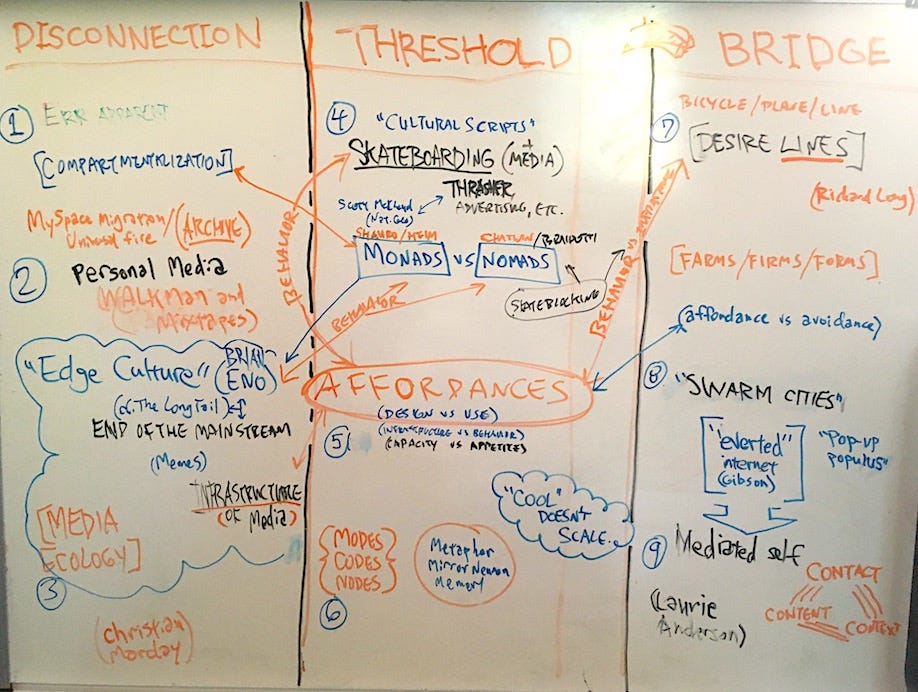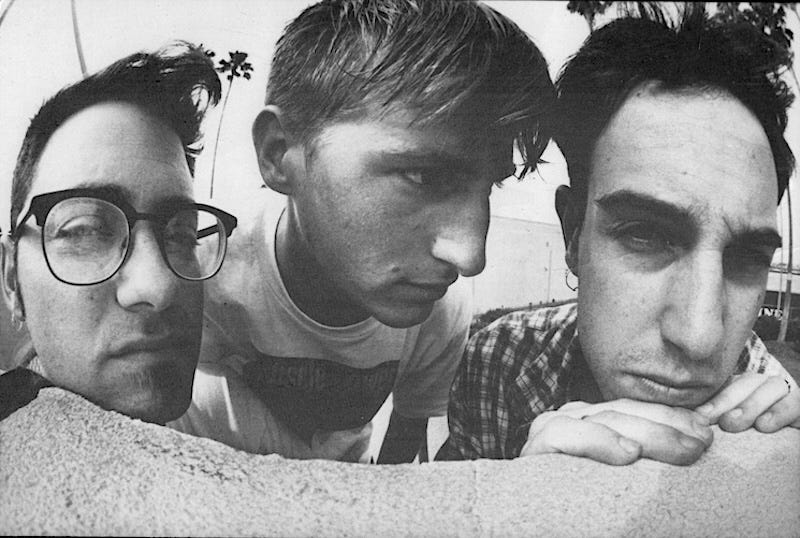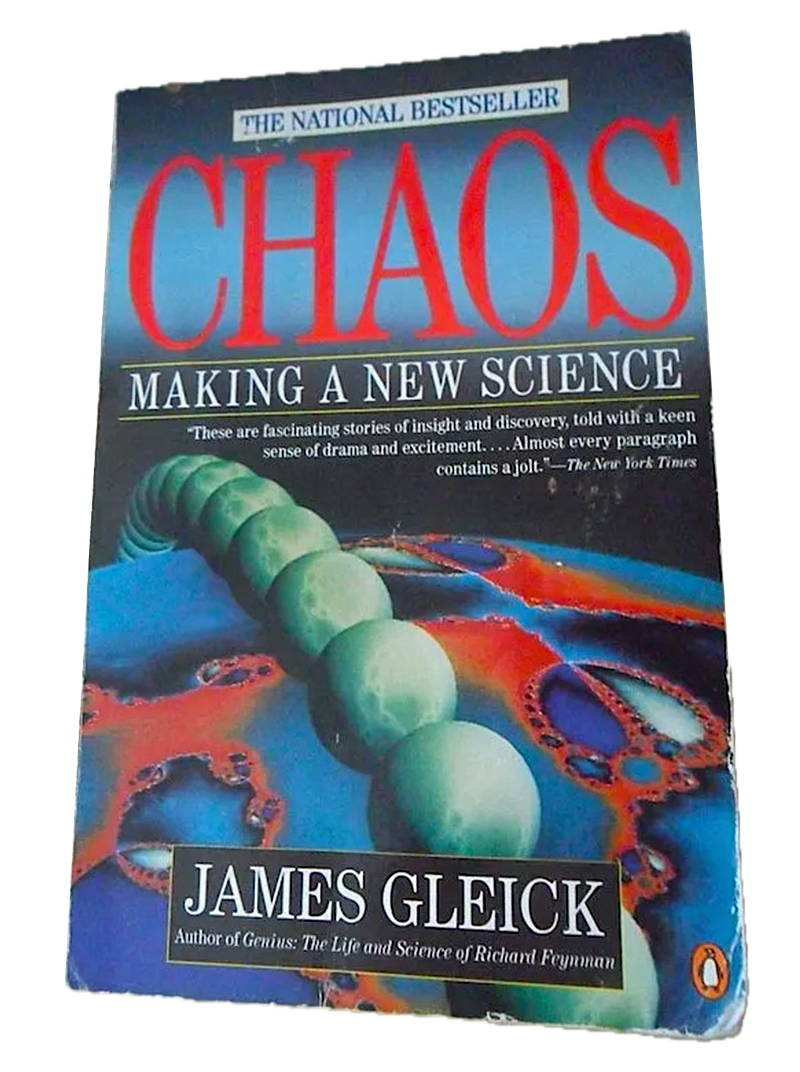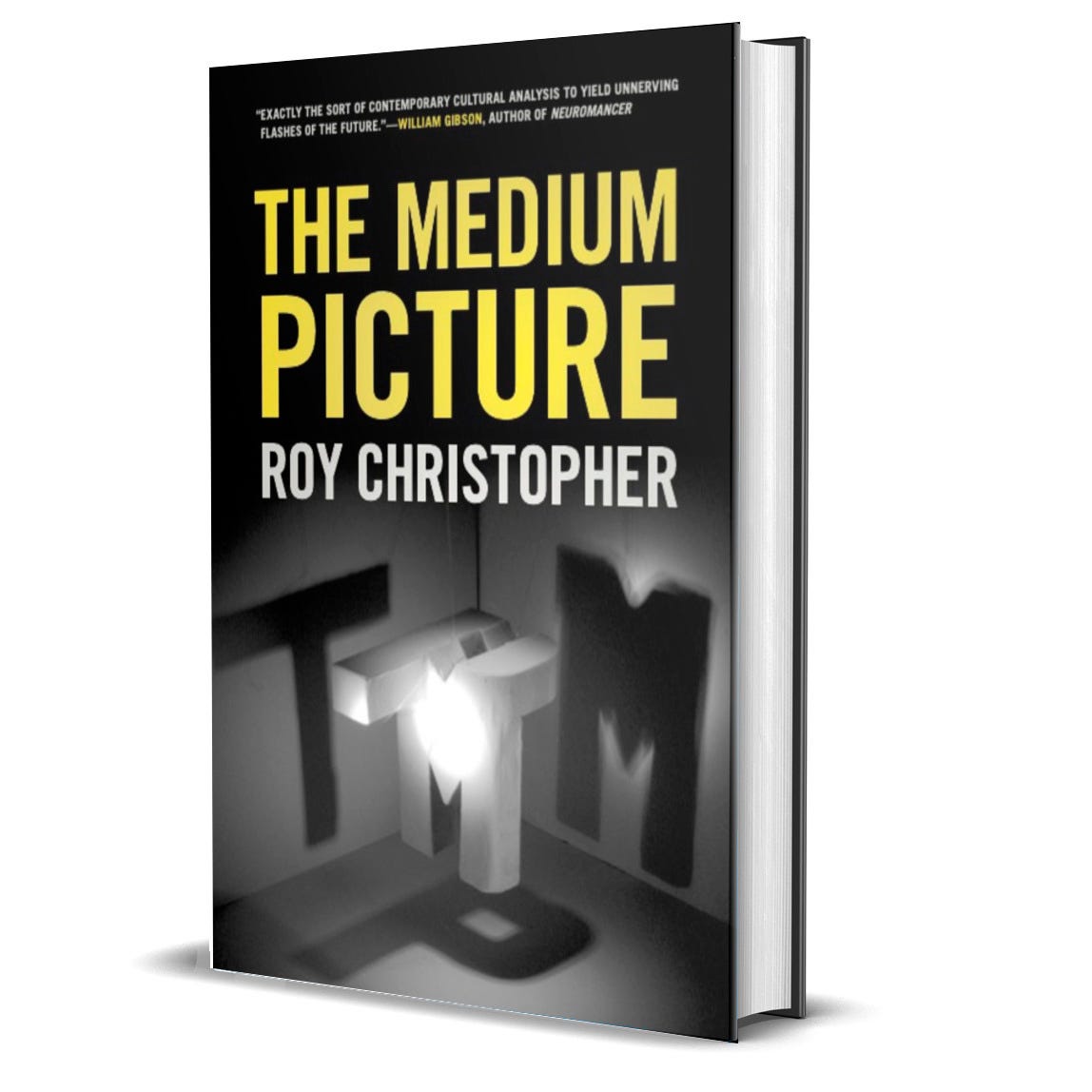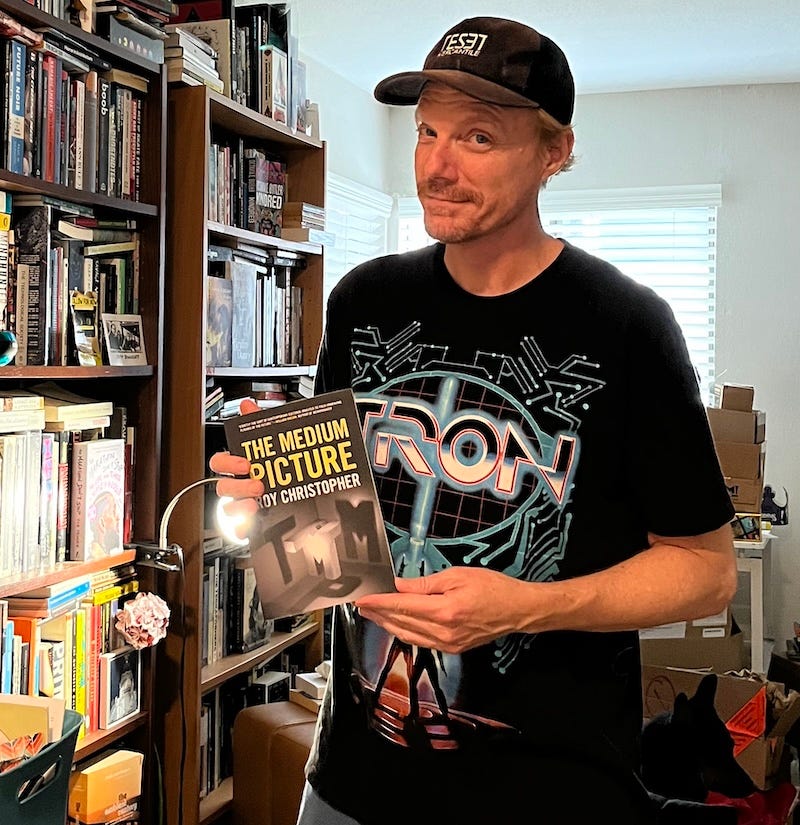To Seek Whence Cometh a Sequence
Trying to triangulate my writing inspirations over the years.
I recently got an email celebrating the 21st anniversary of my long-abandoned LiveJournal account. I looked back at my six entries from 2002 and found the seeds of my book The Medium Picture: early books I read on media theory, a note on Brian Eno’s edge culture, the claustrophobia I felt from working on computer screens.
The Medium Picture was supposed to be my first book. I started outlining it in 2001, worked with an agent for a while, and—after a decade of research and revision—I originally signed a contract for it with Zer0 Books in 2011. The book then went through several publishing shuffles (as did the publisher), during which I went on to finish several other projects. I worked on it off and on in the meantime and am happy to finally have it out of my head and into your hands in two weeks.
In what follows I trace a few of the writers who influenced me along the way to this book’s publication. This stuff doesn’t come from nowhere after all.
As you know, I started writing as a byproduct of making zines. I’d been writing before that, but making zines reframed the practice for me. The layouts originally attracted me to the zine format. I found the juxtaposition of words, images, and drawings on the page endlessly interesting as a fifteen-year old, but if my friends and I wanted a story written or a review of something, we had to write it. That’s where, as I often say, I learned to turn events and interviews into pages with staples.
At some point in my early BMX and skateboarding days, my admiration and ambition pivoted from the riders and skateboarders on the pages of the magazines to the writers and editors of those pages. The main ones being Andy Jenkins, Spike Jonze, and Mark Lewman. Not only did they run the magazines I wanted to be a part of (e.g., Freestylin’, Go, Homeboy, Dirt, Grand Royal), but when I started making zines, theirs were the high watermark. Andy’s Bend, Spike’s Stapled and Xeroxed Paper, and Lew’s Chariot of the Ninja were annexes and extensions of who they were in the magazines. I’ve stayed in touch with them off and on over the years, and they’ve taught me many, many things, but the main one is that you don’t need permission to do something great. Anything is possible.
Regrettably, I was not always a big reader. I mean I read a lot as a kid, but school sucked most of the fun out of it. The book that brought me back to reading was Chaos: Making a New Science by James Gleick. As I told Gino Sorcinelli at Bookshelf Beats, reading Chaos was a hairpin turn to a new direction for me. My shift in mindset not only included regular reading and going back to school, but also running a website about the new ideas I was learning. When I switched from making ‘zines about skateboarding, BMX, and music to making websites about new science and new media, Gleick was one of the first people I contacted. I didn't know it until years later, but he’d just gone through a horrendous plane crash and much personal loss. The first email I got from Jim was from his hospital bed at NYU’s Rusk Institute of Rehabilitation Medicine. Hearing back from him was another push on my new path.
Not long after that I found Media Virus! by Douglas Rushkoff, and my new direction became even clearer. Like Gleick, Rushkoff’s mix of smarts and readability, as well as his continued support, have kept me inspired and motivated. Somewhere in there a friend of mine recommended Steven Johnson’s Interface Culture. Like Chaos and Media Virus!, that book became a major touchstone for my thinking and its author a major influence on my writing.
Further along if not further afield, among many other writers, critics, and theorists, I found Steven Shaviro, Mark Dery, Erik Davis, Tricia Rose, Rebecca Solnit, Dave Tompkins, Kodwo Eshun, and Mark Fisher, all of whom employ music, movies, and other media in their theory and criticism. Having come from music, I found their approaches appealing, and I could comfortably see myself following them in ways I hadn’t felt with a lot of other writers I was reading. I’m still at it.
In the preface to The Medium Picture I write that if I were to follow through with the book’s cover image, inspired by Douglas Hofstadter’s Pulitzer Prize-winning first book, Gödel, Escher, Bach, and name TMP after the three people who shaped it, it would be called Gibson, Eno, McLuhan.
William Gibson’s thought hangs heavy over a lot of my work. Nearly every time I come up with a way to theorize and think about the process of technological mediation or cultural evolution, I find Gibson got there first. His novels and essays are subtle sources of the nuances of the now, a wealth of ways to think about how we currently live with our world.
Brian Eno’s thinking on music and media is both vast and deep, and I’ve been yammering about his idea of edge culture for years. Outlined briefly in his 1996 memoir, A Year with Swollen Appendices, it has shaped my thinking in many ways. He kindly granted me permission to explore and expand on it further in TMP. I can only hope I did his thought and gesture justice.
Anyone who tries to do what I attempt to do has to contend with Marshall McLuhan, whose name and thought you might recognize from past posts and writings. If you want to study media and mediation, he’s the starting point. Ignore him at your peril.
A list like this can never be complete (I’ve already started a second part to this post), but with The Medium Picture finally coming out in two weeks (!!!), I wanted to try to retrace some of my steps — especially given how long I’ve been working on it.
The Medium Picture exists!
Speaking of, I just got my author copies! It really is a beautiful book. I worked so hard on it for a so long, and I’m very proud of how it came out. Many thanks to Nathaniel Holly, Mick Gusinde-duffy, Candice Lawrence, Bethany Snead, Jon Davies, Chris Dodge, Erin Kirk, and all at the University of Georgia Press for taking a chance on this book, taking the time and care, and making it look so great. I can’t wait for everyone to see it!
The Medium Picture comes out on October 15th! Preorder yours now!
Thank you for reading and preordering,
-royc.
http://roychristopher.com
* Apologies to Douglas Hofstadter from whom I stole the title of this post. It’s the name of Chapter One in his brilliant 1995 book Fluid Concepts and Creative Analogies.


